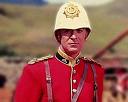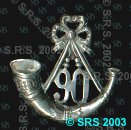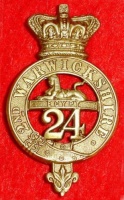| Latest topics | » Did Ntishingwayo really not know Lord C wasn't at home  Tue Nov 19, 2024 10:05 am by Tig Van Milcroft » Dr. A. Ralph Busby Sun Nov 17, 2024 11:25 pm by Julian Whybra » Lieutenant M.G. Wales, 1st Natal Native Contingent Sat Nov 16, 2024 12:32 pm by Matthew Turl » Colonel Edward William Bray, 2nd/4th Regt. Fri Nov 15, 2024 9:55 pm by Julian Whybra » Royal Marine Light Infantry, Chatham Thu Nov 14, 2024 7:57 pm by Petty Officer Tom » H.M.S. Forester Thu Nov 14, 2024 4:07 pm by johnex » Samuel Popple Wed Nov 13, 2024 8:43 am by STEPHEN JAMES » Studies in the Zulu War volume VI now available Sat Nov 09, 2024 6:38 pm by Julian Whybra » Colonel Charles Knight Pearson Fri Nov 08, 2024 5:56 pm by LincolnJDH » Grave of Henry Spalding Thu Nov 07, 2024 8:10 pm by 1879graves » John West at Kambula Thu Nov 07, 2024 5:25 pm by MKalny15 » Private Frederick Evans 2/24th Sun Nov 03, 2024 8:12 pm by Dash » How to find medal entitlement Coker Sun Nov 03, 2024 10:51 am by Kev T » Isandlwana Casualty - McCathie/McCarthy Sat Nov 02, 2024 1:40 pm by Julian Whybra » William Jones Comment Fri Nov 01, 2024 6:07 pm by Eddie » Brother of Lt Young Fri Nov 01, 2024 5:13 pm by Eddie » Frederick Marsh - HMS Tenedos Fri Nov 01, 2024 9:48 am by lydenburg » Mr Spiers KIA iSandlwana ? Fri Nov 01, 2024 7:50 am by Julian Whybra » Isandhlwana unaccounted for casualties Fri Nov 01, 2024 7:48 am by Julian Whybra » Thrupps report to Surgeon General Wolfies  Thu Oct 31, 2024 12:32 pm by Julian Whybra » Absence of Vereker from Snook's Book Fri Oct 25, 2024 10:59 pm by Julian Whybra » Another Actor related to the Degacher-Hitchcock family Mon Oct 21, 2024 1:07 pm by Stefaan » No. 799 George Williams and his son-in-law No. 243 Thomas Newman Sat Oct 19, 2024 12:36 pm by Dash » Alphonse de Neuville- Painting the Defence of Rorke's Drift Fri Oct 18, 2024 8:34 am by Stefaan » Studies in the Zulu War volumes Wed Oct 16, 2024 3:26 pm by Julian Whybra » Martini Henry carbine IC1 markings Mon Oct 14, 2024 10:48 pm by Parkerbloggs » James Conner 1879 clasp Mon Oct 14, 2024 7:12 pm by Kenny » 80th REG of Foot (Staffords) Sun Oct 13, 2024 9:07 pm by shadeswolf » Frontier Light Horse uniform Sun Oct 13, 2024 8:12 pm by Schlaumeier » Gelsthorpe, G. 1374 Private 1/24th / Scott, Sidney W. 521 Private 1/24th Sun Oct 13, 2024 1:00 pm by Dash » A Bullet Bible Sat Oct 12, 2024 8:33 am by Julian Whybra » Brothers Sears Fri Oct 11, 2024 7:17 pm by Eddie » Zulu War Medal MHS Tamar Fri Oct 11, 2024 3:48 pm by philip c » Ford Park Cemetery, Plymouth. Tue Oct 08, 2024 4:15 pm by rai » Shipping - transport in the AZW Sun Oct 06, 2024 10:47 pm by Bill8183 |
| November 2024 | | Mon | Tue | Wed | Thu | Fri | Sat | Sun |
|---|
| | | | | 1 | 2 | 3 | | 4 | 5 | 6 | 7 | 8 | 9 | 10 | | 11 | 12 | 13 | 14 | 15 | 16 | 17 | | 18 | 19 | 20 | 21 | 22 | 23 | 24 | | 25 | 26 | 27 | 28 | 29 | 30 | |  Calendar Calendar |
|
| Top posting users this month | |
| New topics | » Dr. A. Ralph Busby Sat Nov 16, 2024 11:36 am by Julian Whybra » Colonel Edward William Bray, 2nd/4th Regt. Wed Nov 13, 2024 8:49 pm by John Young » Samuel Popple Tue Nov 12, 2024 3:36 pm by STEPHEN JAMES » Colonel Charles Knight Pearson Fri Nov 08, 2024 5:56 pm by LincolnJDH » John West at Kambula Mon Nov 04, 2024 11:54 pm by MKalny15 » How to find medal entitlement Coker Fri Nov 01, 2024 9:32 am by Kev T » Frederick Marsh - HMS Tenedos Thu Oct 31, 2024 1:42 pm by lydenburg » Did Ntishingwayo really not know Lord C wasn't at home  Mon Oct 28, 2024 8:18 am by SRB1965 » Thrupps report to Surgeon General Wolfies  Sun Oct 27, 2024 11:32 am by SRB1965 |
| Zero tolerance to harassment and bullying. | |
Due to recent events on this forum, we have now imposed a zero tolerance to harassment and bullying. All reports will be treated seriously, and will lead to a permanent ban of both membership and IP address.
Any member blatantly corresponding in a deliberate and provoking manner will be removed from the forum as quickly as possible after the event.
If any members are being harassed behind the scenes PM facility by any member/s here at 1879zuluwar.com please do not hesitate to forward the offending text.
We are all here to communicate and enjoy the various discussions and information on the Anglo Zulu War of 1879. Opinions will vary, you will agree and disagree with one another, we will have debates, and so it goes.
There is no excuse for harassment or bullying of anyone by another person on this site.
The above applies to the main frame areas of the forum.
The ring which is the last section on the forum, is available to those members who wish to partake in slagging matches. That section cannot be viewed by guests and only viewed by members that wish to do so. |
| Fair Use Notice | | Fair use notice.
This website may contain copyrighted material the use of which has not been specifically authorised by the copyright owner.
We are making such material and images are available in our efforts to advance the understanding of the “Anglo Zulu War of 1879. For educational & recreational purposes.
We believe this constitutes a 'fair use' of any such copyrighted material, as provided for in UK copyright law. The information is purely for educational and research purposes only. No profit is made from any part of this website.
If you hold the copyright on any material on the site, or material refers to you, and you would like it to be removed, please let us know and we will work with you to reach a resolution. |
|
| | BUFFALO BORDER GUARD |  |
|
+3Chelmsfordthescapegoat ADMIN 24th 7 posters | | Author | Message |
|---|
24th

Posts : 1862
Join date : 2009-03-25
 |  Subject: BUFFALO BORDER GUARD Subject: BUFFALO BORDER GUARD  Tue Jul 12, 2011 9:52 pm Tue Jul 12, 2011 9:52 pm | |
| Brett. Hope you don't mind me posting this. Its just to good not to add to this section of the forum.
"The Buffalo Border Guard (BBG) was the volunteer regiment of the early settlers in the Dundee district of Natal between 1873 and 1879. It took its name from the Buffalo River, which formed the border between the Colony of Natal and Zululand. It was made up of mounted men, who never exceeded 30 in number. Contemporary volunteer units elsewhere in northern Natal were the Newcastle Mounted Rifles (NMR) and the Weenen Yeomanry, while the larger Natal Carbineers (NC), which had its headquarters in Pietermaritzburg, came to serve in northern Natal as well.
The uniform of the BBG included a black pillbox cap, with a band of black braid on which a silver badge with a buffalo head on a wreath was mounted. The tunic was black cord with black velvet facings and white metal buttons with buffalo head and BBG title. The breeches were also black and were worn with black leather boots. The men were armed with Martini-Henry rifles and Webley revolvers.
The BBG was formed in October 1873 during the Langalibalele Rebellion and was under the command of James Rorke, after whom Rorke’s Drift was named. Rorke was succeeded by J S Robson, another of the early settlers in the district. In 1878, Robson was appointed Border Agent for the Buffalo border. He formed and took command of the Border Police, which was comprised of Natal Zulus armed with traditional weapons. The command of the BBG then passed to Lieutenant William Craighead Smith.
During 1878, several disaffected Boers left the BBG and they were gradually replaced by English settlers. By 16/12/1878, the BBG’s strength was 20 men, while this regiment’s Zulu War medal roll lists 25 men, of which only one received the medal without the 1879 clasp. Three medals were unclaimed and returned to Woolwich.
Fort Pine, which is about 20 kilometres south-east of Dundee, was built in 1878 as a Natal Mounted Police (NMP) post, but by December it became the headquarters for the BBG, which had been mobilised to patrol the adjacent border with Zululand. Further south near Helpmekaar the border was patrolled by the NMR and NC. The NMP and Border Police were also active along the Buffalo River border.
As tensions grew along the entire border with Zululand, Imperial troops were deployed and several battalions of the Natal Native Contigent (NNC) were raised to strengthen the Colonial contribution to the defence of Natal. On 11/12/1878, the British High Commissioner in Natal presented an ultimatum to the Zulu king that essentially required the Zulu nation to forfeit its independence by 10/1/1879. Anticipating that the ultimatum would be rejected, the Imperial forces and their Colonial allies prepared to invade Zululand on 11/1/1879. The British Commander, Lieutenant-General F A Thesiger (later Lord Chelmsford) arranged his forces in five columns along the Zululand border.
The BBG was part of the Colonial force in No. 3 (or Centre) Column that crossed into Zululand at Rorke’s Drift under the command of Lord Chelmsford. The NMP and Natal Volunteers, which had been commanded by Major John Dartnell of the NMP, were placed under the command of Major J Russell of the 12th Lancers, while Dartnell was appointed to Chelmsford’s staff.
After crossing into Zululand, the Centre Column camped on the eastern slopes of the hill known to the Zulus as Isandlwana. On 21/1/1879, Chelmsford dispatched a force of Colonials under Major Dartnell and the NNC under Commandant Lonsdale to search for the Zulu army east of Isandlwana. The Colonial contingent was made up of about 100 NMP, 30 NC and 20 NMR and BBG. Remaining at the Isandlwana camp were 34 NMP, 26 NC, 15 NMR and 8 BBG. The BBG Officer Commanding, Lieutenant W C Smith, was away on a cattle-buying expedition.
The Isandlwana camp was overrun by the Zulu army on 22/1/1879 and most of the men there were killed, including three from the BBG. They were Troopers Emry, Gutridge and Wehr. Two of the men had died while trying to escape along the route to what became known as Fugitive’s Drift on the Buffalo River. Their unrecognisable bodies were found months later in the undergrowth at the foot of a cliff. The surviving five men from the BBG escaped by crossing the Buffalo River back into Natal, after which they sought refuge, first at Rorke’s Drift and then at Helpmekaar on the road between Greytown and Dundee. There was a widespread fear that the Zulus would invade Natal, so safety was sought as far from the border as possible. Quartermaster D McPhaill of the BBG went as far as Newcastle.
The Colonial contingent under Major Dartnell and others that had been on patrol returned to the overrun camp on the evening of 22/1/1879 and spent a restless night camped among the bodies of their dead comrades. They heard the gunfire from the Battle of Rorke’s Drift but they only learnt of the successful defence of the Drift the next day after the surviving elements of Centre Column retreated back across the Buffalo River. The looted camp at Isandlwana was abandoned and the bodies of the dead were left unburied and were to remain so for several months.
The Buffalo border region was in a state of fear and demoralization for several weeks after the Battles of Isandlwana and Rorke’s Drift, but gradually composure and order was restored. On 7/2/1879, the BBG and NMR were posted to Fort Pine, from which they carried out patrols along the adjacent Buffalo River. Before the war started, many local settlers had already taken refuge at Fort Pine and, after the Battle of Isandlwana, their numbers were swelled by other refugees seeking a safe haven. By 25/1/1879, there were 350 settlers at Fort Pine. What had been suitable accommodation for the 25 strong BBG before the war became grossly overcrowded and unhealthy. By early March, many people had taken ill and some had to be sent as far as Newcastle for treatment.
Helpmekaar became the assembly point for the reinforced Centre Column that was to reinvade Zululand. In spite of the growing size of the Imperial army and regular patrols along the Buffalo River by both Imperial and Colonial troops, the situation remained tense and there were many false alarms. With the focus on Helpmekaar, the needs of small outposts such as Fort Pine were neglected and units such as the BBG were required to provide their own rations, rather than being supplied by the commissariat at Helpmekaar.
The former officer commanding the BBG, J S Robson, was given command of Fort Pine and he reported that on 12/2/1879 there were 54 settlers able to bear arms, as well as 39 men from the BBG and NMR. The morale of the settlers at Fort Pine was low and they complained about their lot. Gradually as tension along the border eased, settlers began to move away from the fort and by May almost all had left.
The BBG and NMR remained at the fort and continued to patrol the border between Landman’s and Robson’s Drifts. Further south punitive raids across the Buffalo River had started as early as 4/2/1879. On 28/2/1879, it was the turn of 16 men from the BBG and NMR under Lieutenant W C Smith to cross the river at Robson’s Drift in search of a 50-strong body of Zulus. The latter retired without engaging the settler soldiers. Raids and counter-raids across the Buffalo River took place sporadically and the BBG and NMR remained on high alert.
It was during this period on 23/4/1879 that the BBG and NMR submitted a petition to Major Dartnell requesting that they be released from service. This request was turned down.
In time, the focus of the British preparations for the second invasion shifted northwards from Helpmekaar and Rorke’s Drift to Dundee and Landman’s Drift, with Fort Pine again being in something of a backwater. On 2/5/1879, there was an alert at Fort Pine that a large group of Zulus had crossed the Buffalo River in their patrol area. This proved to be another of the false alarms that characterized this period of the war.
During May Lord Chelmsford decided that the dead at Isandlwana should be buried and anything of value salvaged from the battlefield. On 21/5/1879, a large well-guarded force crossed into Zululand from Rorke’s Drift and made for Isandlwana. The Colonial units that had lost men during the battle, including the BBG, were represented. The Imperial and Colonial soldiers scoured the battlefield and, where possible, identified the bodies of their dead comrades and buried them in hastily dug graves.
Most of the Colonial dead were found clustered round the body of Colonel A Durnford, with whom they had made a desperate last stand. Durnford was an officer of the Royal Engineers, who had been posted to Natal in 1873. A few months later he took part in the Langalibalele Rebellion and was wounded in the skirmish at Bushman’s River Pass, where three Carbineers were killed. In spite of this inauspicious start to his stay in Natal, he came to be a respected member of the Colonial community.
The final burials at Isandlwana began on 20/6/1879 and once again members of the BBG joined other Colonial units in this grim task.
The reinvasion of Zululand by what was then known as the 2nd Division began from Landman’s Drift at the end of May. The NMP and Natal Volunteers were not part of the invasion force, it having been decided that further casualties would not be tolerated by the Colonists. This decision upset many of those in uniform, who would have preferred to have been given an opportunity of avenging their dead comrades.
The invading columns of the Imperial forces converged on the Zulu capital of Ulundi, where the final decisive battle of the Anglo-Zulu War was fought on 4/7/1879. With the military power of the Zulus broken, the demobilsation and repatriation of troops began. Early in August, members of the BBG and NMR returned to their homes. All had tired of soldiering and, since the pacification of Zululand seemed to have been achieved, both the BBG and NMR disbanded permanently.
Although short-lived the BBG had made its mark on the military history of South Africa. The badges worn by the men and the medals awarded to them are sought-after rarities that are a reminder of men from Dundee during a turbulent time in the history of Natal.
The colony’s senior volunteer regiment, the Natal Carbineers, replaced the small volunteer units of northern Natal after 1880. The BBG’s successor was the Dundee Troop of No.7 Squadron, NC, which fought in both the Anglo-Boer War (1899-1902) and the Natal Rebellion (1906). The link between Dundee and the NC continued after 1914 when a second battalion of the NC was established in northern Natal. This battalion served in both World Wars, but was disbanded in 1954 by the Afrikaner Nationalist Party, which had come to power in 1948."
REFERENCES
Henderson, S. 1979. The Turbulent Frontier – Biggarsberg and Buffalo at the
Crossroads. In: The Zulu War and the Colony of Natal. Pietermaritzburg:
Natal Provincial Administration.
Laband, J P C, Thompson, P S & Henderson, S. 1983. The Buffalo Border
1879 The Anglo-Zulu War in Northern Natal. Durban: University of Natal.
By Brett Hendey. Taken from the Victorian War forum. |
|   | | ADMIN

Posts : 4358
Join date : 2008-11-01
Age : 65
Location : KENT
 |  Subject: Re: BUFFALO BORDER GUARD Subject: Re: BUFFALO BORDER GUARD  Fri Jun 01, 2012 7:22 pm Fri Jun 01, 2012 7:22 pm | |
| AS far as Im aware two pretty unique photos of Fort Pine, former head Quarters of the Buffalo Border Guard. [You must be registered and logged in to see this image.]Photos and Text by Springbok. Copyright. |
|   | | Chelmsfordthescapegoat

Posts : 2593
Join date : 2009-04-24
 |  Subject: Re: BUFFALO BORDER GUARD Subject: Re: BUFFALO BORDER GUARD  Fri Jun 01, 2012 11:06 pm Fri Jun 01, 2012 11:06 pm | |
| Out standing photography. Now that's History. To think the border guard were once there. It look like the stones are just stacked on top of each other. Did they not used morter to hold them together. |
|   | | 90th

Posts : 10909
Join date : 2009-04-07
Age : 68
Location : Melbourne, Australia
 |  Subject: Colonial Regts in the zulu war - The Buffalo Border Guard Subject: Colonial Regts in the zulu war - The Buffalo Border Guard  Fri Jun 01, 2012 11:57 pm Fri Jun 01, 2012 11:57 pm | |
| Hi CTSG. I doubt any mortar has been used . They the stones / slabs are just stacked on top of each other . Cheers 90th.  |
|   | | Chelmsfordthescapegoat

Posts : 2593
Join date : 2009-04-24
 |  Subject: Re: BUFFALO BORDER GUARD Subject: Re: BUFFALO BORDER GUARD  Sat Jun 02, 2012 8:17 am Sat Jun 02, 2012 8:17 am | |
| Health and safety issues there. |
|   | | 24th

Posts : 1862
Join date : 2009-03-25
 |  Subject: Re: BUFFALO BORDER GUARD Subject: Re: BUFFALO BORDER GUARD  Sat Jun 02, 2012 8:37 am Sat Jun 02, 2012 8:37 am | |
| Springbok. Did you manage to see how thick the walls were. |
|   | | Frank Allewell

Posts : 8572
Join date : 2009-09-21
Age : 77
Location : Cape Town South Africa
 |  Subject: Re: BUFFALO BORDER GUARD Subject: Re: BUFFALO BORDER GUARD  Sat Jun 02, 2012 10:05 am Sat Jun 02, 2012 10:05 am | |
| CTSG
They are 'cemented' walls. The photo with the loop holes was the stable area, the other was the accomadation barracks. The outside wall of the accomadation area is actually plastered to waterproof.
In those days the health and Safety regulations were exactly what they should be today, figments of the imagination.
Access to the fort is through a private farm, the gates are permanently locked. Then its a fair old drive with a 4 x 4 to get there. hence very few visitors, not to sure if people still know it exists. The very kind man that arranged with the farmer to allow me to see it is at present trying to get the heritage board to restore the fort. AS you can see from the photos the biggest problem at present is the trees growing and destroying the walls.
24th
the wall are around 600 to 900 mm thicj ( 2 to 3 foot ). |
|   | | Brett Hendey

Posts : 269
Join date : 2010-12-02
Location : Kloof, KZN
 |  Subject: Re: BUFFALO BORDER GUARD Subject: Re: BUFFALO BORDER GUARD  Sun Jun 03, 2012 8:05 am Sun Jun 03, 2012 8:05 am | |
| Springbok
Thank you for the pics of Fort Pine. Because of my interest in the BBG, I have often wondered what had survived of Fort Pine. The remains are impressive. Perhaps it is just as well it is difficult to access, given the ill-treatment of relics of the Colonial area in KwaZulu-Natal (e.g. the recent vandalism of a Boer War cemetery at Ladysmith).
Regards
Brett |
|   | | 24th

Posts : 1862
Join date : 2009-03-25
 |  Subject: Re: BUFFALO BORDER GUARD Subject: Re: BUFFALO BORDER GUARD  Sun Jun 03, 2012 10:04 am Sun Jun 03, 2012 10:04 am | |
| Here's some infoe on fort pine and the BBG. [You must be registered and logged in to see this link.] |
|   | | Mr M. Cooper

Posts : 2591
Join date : 2011-09-29
Location : Lancashire, England.
 |  Subject: Buffalo Border Guard Subject: Buffalo Border Guard  Sun Jun 03, 2012 10:55 am Sun Jun 03, 2012 10:55 am | |
| Hi 24th. Many thanks for the link. Martin.  |
|   | | | | BUFFALO BORDER GUARD |  |
|
Similar topics |  |
|
| | Permissions in this forum: | You cannot reply to topics in this forum
| |
| |
| |
